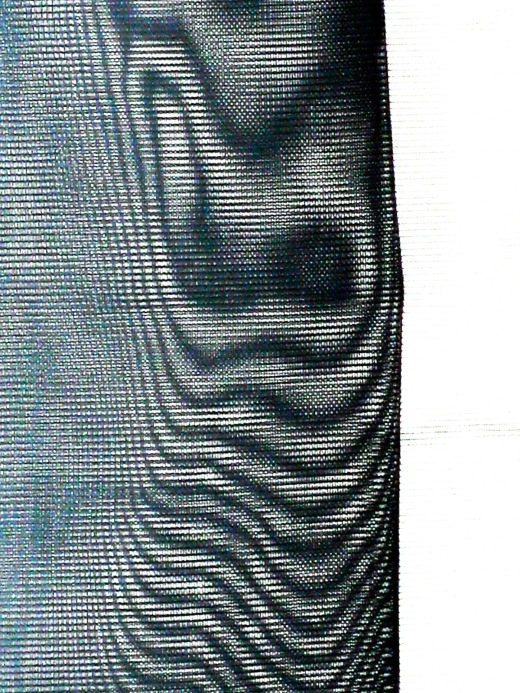
Formal and Informal views on specialisation
Most people moan about ‘specialists’ but they definitely want to boast about the ‘top specialist’ they are seeing for their particular health problem. Most people hate the boredom of studying one tiny thing- I read about a man who spent four years in the crown of a baobab tree writing his Phd on the micro-organisms living in just that one five square foot area- he rebelled in the end which seems a normal enough reaction.
The culture we live in has a formal appreciation of specialisation (whereas, say, Bedouin or plains Indian culture doesn’t).
The distinction between what is formally accepted in a culture and informally accepted is a powerful tool of analysis first used by the US anthropologist Edward T Hall. In the US it is formally accepted that one should be relaxed on a first meeting. Everyone is informally tense, but pretends to be relaxed. In Japan it is formally accepted that one will be tense and nervous on a first meeting. It is meant to be wooden. Even if you feel relaxed you should act a bit stiff the first time you meet someone- it shows respect. I was always shocked at the change between a first and second meeting in Japan- second time around you can be yourself and be relaxed.
In the UK the formal culture was far stiffer than the US- but it’s changing. In the US it shows you like someone when you are ‘relaxed’ around them and help yourself to food from their fridge. To raid a friend’s fridge usually requires invitation in the UK- but not everywhere- slowly the US notion of being relaxed equalling friendliness is permeating.
A formal appreciation means that it is the default you reach for when you aren’t sure of your social footing. When I was at school there was a ‘formal appreciation’ of watching the TV in the evening and talking about it at school the next day. Because I was banned from watching certain channels I used to listen to the general conversation, pick up the relevant stuff, and then recycle it as if I had actually watched that program. No one cared or noticed. Informally I was ignorant of the TV, formally I knew my stuff.
An ‘informal appreciation’ is what people do and say among their most intimate friends and acquaintances. They may even have never conceptualised the little ‘true’ observations they make. Comedians, in the UK at least, make a good living taking informally accepted insights and ‘formalising’ them by having the courage to deliver them to the mainstream.
In terms of (not especially funny) comedic observation the word ‘having a senior moment’ was an informal recognition of the widespread nature of cognitive decay in the late middle-aged. It’s part of the formal culture now after comedians used it for a while to get laughs.
Watching and liking football was something that men did until the 1990s- and only informally did women do it. Now we have female football commentators. Liking football has been formally accepted as part of the mainstream culture for everyone.
The ‘gap year’ was something a few people who applied to Oxford and Cambridge did (because the lateness of the entrance exams meant you had a gap before going up)– it was never mentioned outside the narrow culture of those universities. But once much larger numbers became students it was easier to defer entry to any university- the gap year became formalised into mainstream culture.
These examples are only included to get you thinking about the formal and the informal. Many people cleave to the formal. They want to ‘belong’ to the main group. This kind of person uses phrases current on television. Inevitably, whatever their age group, they are already behind the times. Things move on and the informal is always being turned into the formal while new truths, relevances, social practices evolve and emerge. Those who are more observant and less concerned about ‘fitting in’ live more in the informal world than the formal one.
Which brings us to specialisation.
Specialising has been thoroughly formalised for a century or more. The idea of a ‘well rounded man’- once a formal concept, probably would now be used by a mainstream comedian to signify a tubby chap. The formal culture has one agenda on experts and specialists: they are the final word on everything. Of course informally we moan about them, we love it when they are proved wrong. But the measure is: listen to the radio or TV- they always announce a pundit as ‘an expert’ or ‘specialist on X’. I’ve had it happen myself when I went on Radio 4 to talk about a dam in Africa (because I wrote a general book on the Nile) and the producer kept calling me Dr until I explained I wasn’t one. It diminished his program to have a non-specialist- irrespective of what I knew. Just like knowing the content of th TV shows as a kid without watching, we know that many ‘specialists’ have formal acceptance way beyond their competence. And vice versa.
Specialisation- what is it good for?
We know what- doing repetitive tasks. Everything we do has a start-up and wind-down time. If you have a sequence of tasks there is a lot of in between time starting up and winding down between each task. This is eliminated if you simply do the same thing again and again. Time is saved. Production rises. The job specialisation of the production line- first utilised in the making of needles in the 17th century, but reaching its logical conclusion with the moving production line of Henry Ford- breaks every big job down into the component parts that can be most quickly and easily repeated.
Which is why we hate it. Anyone who has worked on a production line for any length of time is usually groaning with inner boredom. It’s one reason for industrial sabotage. Anything to have a laugh on a Friday afternoon. At the old BL plant in Cowley they would weld up banana skins into the subframe. The mysterious smell could never be removed.
From its very beginning everyone has known that increasing specialisation leads to boredom. And yet everyone still extols it- as long as it is other people actually doing the specialising.
And then we have non-physical specialisation. Professional class specialists- doctors, lawyers, scientists. Our complex culture has a place for all of them because it is commonly agreed that knowledge/information is so vastly expanded now that one man or women can only hope to really know a tiny area. What this actually means is that for most of a person’s academic career they are going further and further up an ever narrowing path that finally becomes the single-track that they themselves occupy.
Specialisation makes sense in many many areas. A lawyer who deals with tax problems more than marriage problems should be the go-to guy for a tax question. A mechanic who fixes lots of Daimlers should be good for fixing another.
Strangely this isn’t always the case. But the general principle seems to make sense.
Learning and specialisation
If you want to learn anything you have to focus. No distractions. Which implies specialisation. At least for a time. If you want to master anything you have to focus- perhaps for years- which implies specialisation. But once you’ve mastered, say, golf- which, if we are to believe the 10,000 hour rule, should, at 40 hours a week, 50 weeks a year take five years- what then? Couldn’t you also master dentistry? And then flute playing? Using the five year rule, a normal 40 year working life could conceivably involve mastering 8 completely different subjects.
The fact is, when we focus, in our down-time we often just slack off. We do one thing a lot, and a lot of nothing too. Watching TV, drinking, playing golf without mastering it…Because doing one thing and only one things has risks- boredom, obsessiveness- we have to dilute it. So being a master takes longer than it should.
And once you are a master you have to sell yourself- you make it appear as a rare and difficult…specialisation.
But we should note that focus and learning, though they imply specialisation, and require it for limited periods of time, are not dependent on it in a broader perspective at all. One can focus, learn, use, and move on to another subject quite easily.
Philosophy and specialisation
But specialisation isn’t just about efficiency and focus- it also reflects a philosophical position. In the West man is an island, disconnected from others, generally, living and dying alone- even if he is embedded in a family or society- conceptually ‘being alone’ is a very Western concern. Descartes method of finding truth was to sit alone on top of a stove (or maybe inside it) and simply ignore everything and everyone else’s contribution. From this ‘lonely philosopher’ stance we get a straight line to the existential angst of the 20th century. It may surprise many brought up in the western tradition that among nomadic people, for example, being connected is the starting point. It’s not even doubted. So that naturally leads you to a different place. Even before the marvels of technology blinded us, Western man was predisposed to making jobs lonely, repetitive, specialised, dull. When Bedouin change a tyre (or a lighbulb) they do it in twos, threes or even fours. It may or may not be more efficient but it sure as hell is more fun. As a doctor I was travelling with once observed- “I find it hard to conceive of a depressed Bedouin”. Nomads have many faults and problems- but suffering anomie isn’t one of them.
Where specialisation becomes mere dogma
What if you don’t want to do repetitive work? What if you want to be creative?
What happens when the start up time is actually useful? What happens when moving between different jobs actually improves productivity? By increasing perspective, creative ideas and an overall sense of the importance, or not, of each part of an operation.
Athletes warm up and warm down- it helps reduce injuries. Maybe doing the same task again and again not only causes repetitive strain injuries but also an equivalent mental injury…
Polymathics is about using specialisation as we have always used it- to focus and to learn. But it is also about curtailing the formal, dogmatic uses of specialisation. It is about seeing connection as the starting point, rather than a wistful, hoped for, end game.
 Friday, July 3, 2015 at 9:28AM
Friday, July 3, 2015 at 9:28AM  Robert Twigger | Comments Off |
Robert Twigger | Comments Off | 



